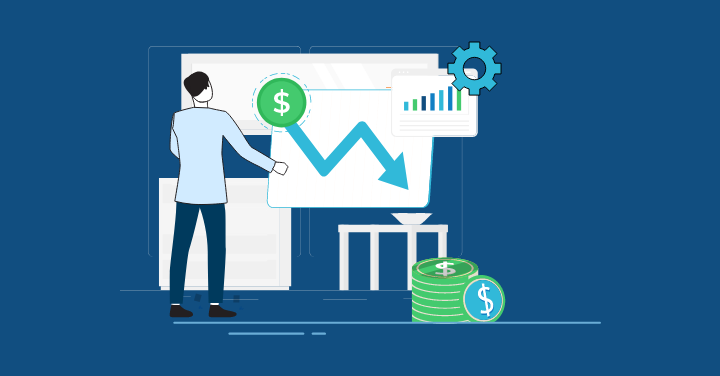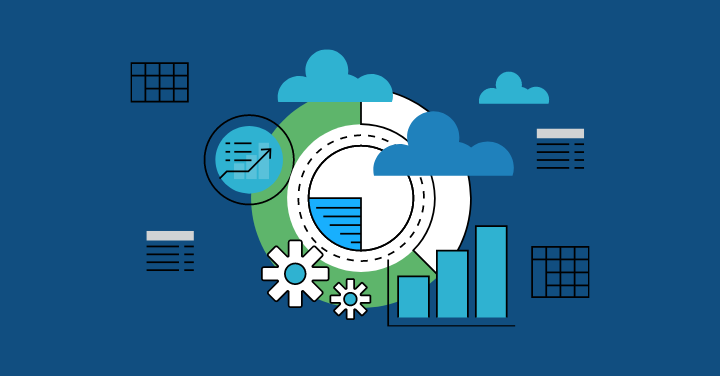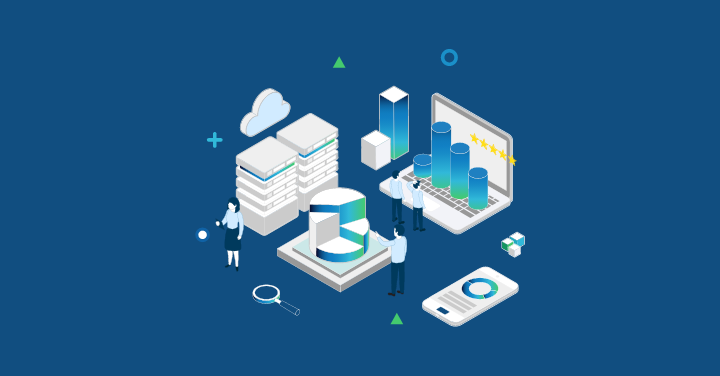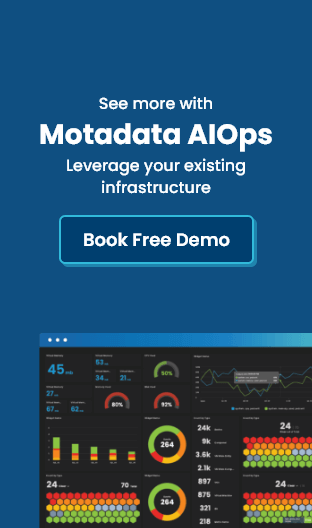Introduction
Network monitoring is no longer a simple back-end process—it’s the backbone of network performance and reliability in today’s multifaceted IT landscape. As networks stretch across on-premises, cloud, and hybrid environments, the scope of monitoring expands dramatically.
Effective network monitoring now means ensuring network health, maximizing uptime, and swiftly addressing issues like packet loss before they escalate.
With new technologies and rising demands, the discipline continues to adapt, making it vital for organizations to stay informed about the latest advancements.
Network monitoring and its importance in today’s complex IT landscape
Network monitoring refers to the ongoing observation and analysis of network infrastructure, which includes all connected network devices, data flows, and network data dependencies.
This monitoring process is crucial for modern networks, especially as organizations increasingly rely on complex topologies and cloud services. It provides visibility into network traffic, application performance, and resource utilization, enabling network administrators to monitor and maintain network availability.
Modern organizations depend on reliable connectivity for business operations, making network management a strategic priority. A failure in the network can result in costly downtime, loss of productivity, and even reputational damage.
According to industry data, just one hour of downtime can cost upwards of $300,000 for large enterprises. Proactive network monitoring enables early detection of network issues and provides actionable insights that help prevent outages.
By leveraging advanced network monitoring software, IT teams can optimize network performance, enhance application performance monitoring, maintain efficient data flow, and ensure continuous service delivery. So, what is network monitoring and why is it important? It is the key to maintaining a resilient, high-performing network infrastructure for any modern organization.
Why 2026 will be a Pivotal year for Network monitoring?
The year 2026 signals a major shift in network monitoring, as future trends shape how IT professionals manage performance and security. Monitoring software is rapidly integrating new tools for real-time visibility and advanced analytics across traditional, cloud, and hybrid environments. As organizations embrace cloud services at scale, the need for unified performance management becomes more critical.
The arrival of AI-driven solutions, automation, and machine learning models redefines how anomalies are detected and resolved. These advancements enable proactive performance insights, automated remediation, and predictive alerting—all crucial for managing increasingly complex networks. IT teams must stay on top of these trends to ensure they can address new challenges and maintain seamless operations.
With hybrid IT on the rise, IT professionals should prepare for the future by adopting monitoring systems that deliver comprehensive, real-time insights and leverage automation to reduce manual workloads. The trends shaping 2026 promise not just better performance, but a more resilient and adaptive IT environment.
The Rise of AI and Machine Learning in Network Monitoring
Significant advancements in AI and machine learning are reshaping network monitoring practices, enabling IT teams to proactively address performance issues. These technologies facilitate automated root cause analysis, providing insights into network performance and traffic patterns that were previously unattainable.
Enhanced monitoring software utilizes historical data and real-time analytics to optimize network health, ensuring seamless user experiences across various environments. With customizable dashboards, these solutions allow network administrators to capture critical performance metrics, ultimately driving operational efficiency in complex infrastructures.
Predictive Analytics and Anomaly Detection
AI and machine learning pave the way for predictive analytics in performance monitoring. By analyzing vast amounts of historical and real-time data, these technologies learn what “normal” looks like for network performance. When traffic patterns or application performance deviate from these baselines, anomaly detection algorithms instantly flag potential issues for IT professionals.
This approach means network monitoring is no longer reactive but anticipates problems before they escalate. Predictive analytics facilitate early intervention, reducing downtime and supporting business continuity. For example, if the monitoring software detects an unusual surge in network traffic, it can suggest targeted actions to prevent bottlenecks.
The impact of these advancements goes beyond simple alerting. Machine learning continuously refines its understanding of network dynamics, making future insights even more accurate. As a result, network performance monitoring becomes a strategic asset, empowering organizations to stay ahead of disruptions and maintain optimal service levels.
Automated Root Cause Analysis and Remediation
Efficient resolution of network issues relies heavily on automated root cause analysis and remediation. Utilizing advanced machine learning algorithms, these systems can analyze historical data to identify patterns and pinpoint the source of performance degradation.
By streamlining the diagnostic process, IT teams are empowered to respond swiftly to network traffic anomalies and application performance hiccups, significantly improving network health. This proactive approach not only reduces downtime but also enhances overall user experience, making it an essential feature in modern network monitoring solutions.
Enhanced Security Posture
Modern network monitoring now integrates robust security monitoring capabilities, making threat detection a core function. Today’s monitoring software continuously scans network activity for unusual behavior, quickly flagging signs of potential breaches, data exfiltration, or unauthorized access. By correlating traffic patterns with known threat indicators, these systems help guard network security on multiple fronts.
As cyber threats become more sophisticated, integrated security monitoring is essential. Automated alerting and in-depth analysis of anomalies enable IT teams to respond rapidly to emerging risks. For instance, a spike in outbound traffic from a specific device may signal a compromised endpoint, prompting immediate investigation.
Combining performance monitoring with advanced security features means organizations no longer need separate tools to ensure network health and safety. This holistic approach enhances the resilience of all network components, helps maintain compliance, and reduces the risk of costly security incidents.
Shifting Architectures and Monitoring Paradigms
Network architecture is evolving, and so are the expectations from a modern monitoring system. As organizations transition toward cloud environments and hybrid infrastructures, monitoring requirements become more complex and dynamic.
Traditional on-premises solutions are being replaced by flexible tools that adapt to cloud-native and multi-cloud setups. These shifts demand monitoring strategies that can seamlessly integrate across distributed environments, ensure network visibility, and provide consistent performance data regardless of where applications and resources reside.
Cloud-Native and Hybrid/Multi-Cloud Monitoring
Monitoring cloud-native, hybrid, and multi-cloud environments presents unique challenges for IT professionals. Unlike traditional networks, these environments span on-premises data centers, public cloud platforms, and private clouds, each with their performance data and monitoring software requirements. Ensuring seamless network visibility across all components is a top priority.
One major challenge is the integration of disparate monitoring systems and data sources. Performance data must be normalized and visualized in unified dashboards, allowing IT teams to quickly spot issues regardless of where they originate. Additionally, monitoring software must adapt to rapid changes in resource allocation, scale, and connectivity that are characteristic of hybrid environments.
Another hurdle is the need for customizable dashboards and network mapping tools, which provide real-time insights into both cloud-native and on-premises components. Overcoming these challenges requires advanced monitoring solutions capable of bridging gaps between environments, ensuring optimal network health and application performance.
Edge Computing and IoT Monitoring
Advancements in edge computing and IoT monitoring are revolutionizing network management. These technologies offer real-time data processing closer to the data source, which significantly reduces response time and enhances overall network performance.
By deploying monitoring systems that utilize machine learning algorithms, organizations can gain insights into traffic patterns, identify potential performance degradation across distributed environments.
Efficient management of network devices is crucial for maintaining user experience, as IoT devices generate vast amounts of network traffic, necessitating robust performance monitoring solutions to ensure optimal network health.
Network-as-a-Service (NaaS) and Software-Defined Networking (SDN)
The integration of Network-as-a-Service (NaaS) and Software-Defined Networking (SDN) revolutionizes how organizations manage network performance. By leveraging cloud services, businesses can dynamically adjust bandwidth and access controls, optimizing network availability and performance.
NaaS enables scalable solutions while SDN enhances network visibility through real-time traffic analysis and performance monitoring. Together, they facilitate customizable dashboards that allow IT teams to proactively address network issues. This synergy not only streamlines network management but also improves user experience by ensuring efficient data flow across diverse environments.
Comprehensive Observability vs. Traditional Monitoring
Observability is redefining how organizations approach network monitoring. Instead of focusing solely on performance metrics, modern monitoring systems now integrate logs, traces, and flow data. This evolution delivers deep network visibility and actionable insights across diverse IT infrastructure.
Traditional monitoring, with its limited scope, often misses the intricate interdependencies and subtle anomalies that can impact performance. By adopting comprehensive observability, IT teams gain a holistic understanding of network health, application performance, and user experience—enabling proactive management and faster issue resolution.
Beyond Metrics: Integrating Network Monitoring Tools
Observability in network monitoring means going far beyond simple performance metrics. Comprehensive monitoring systems now collect and correlate logs, traces, and flow data to provide complete network visibility. This approach allows IT professionals to understand not just that something has gone wrong, but precisely where and why.
Logs capture detailed events, such as configuration changes or security incidents. Traces follow the journey of data packets across the network, revealing latency or connectivity issues.
Flow data analyzes traffic patterns and bandwidth consumption, helping to pinpoint bottlenecks and potential threats. When these data sources are combined, monitoring software can reconstruct incidents and identify root causes much more effectively than traditional tools.
Digital Experience Monitoring (DEM)
Digital Experience Monitoring (DEM) emphasizes the importance of understanding user behavior across diverse applications and networks. By leveraging advanced network monitoring tools, organizations can gain insights into application performance and user experience, ensuring optimal responsiveness. This proactive approach identifies potential issues within the entire network infrastructure, enabling IT teams to enhance service delivery.
With customizable dashboards, DEM facilitates real-time analysis of network traffic, allowing for effective monitoring of performance metrics. As businesses increasingly rely on digital environments, seamless integration of DEM into network management becomes essential for maintaining robust network health.
Automation and Orchestration Redefining Real-time Monitoring
Automation and orchestration are becoming the cornerstones of modern IT operations. By automating routine monitoring tasks and orchestrating complex workflows, organizations can boost efficiency, reduce manual workloads, and react to network issues with unprecedented speed.
These technologies enable monitoring software to handle everything from performance management to server monitoring and incident response—freeing IT professionals to focus on higher-value initiatives. As networks grow in complexity, automation and orchestration ensure that operations remain agile, scalable, and resilient.
Automating Routine Monitoring Task
Automating routine monitoring tasks is essential for effective performance management. Modern monitoring software now handles repetitive checks, threshold-based alerting, and standard remediation without manual oversight. This shift allows IT teams to spend less time on server monitoring and more time on strategic innovation.
Best practices for enterprise network performance monitoring in 2025 include leveraging automation to reduce human error and standardize responses.
For example, monitoring tools can automatically restart services, reconfigure devices, or escalate issues based on pre-set criteria. Customizable workflows extend automation to tailored business needs, ensuring that operational policies are enforced consistently.
Intent-Based Networking (IBN) and Monitoring
Emerging as a revolutionary approach, intent-based networking (IBN) integrates advanced policies into network monitoring systems. This method utilizes machine learning algorithms to analyze performance metrics and adjust network configurations dynamically.
By focusing on user behavior and traffic patterns, IBN enhances network performance and reduces performance degradation.
It empowers IT teams with real-time visibility and automated responses to network issues, ensuring optimal network health. With customizable dashboards and improved network availability, IBN’s application in monitoring simplifies network management, ultimately elevating user experience across cloud environments and modern networks.
Cybersecurity Integration within Network Monitoring
Cybersecurity is now inseparable from network monitoring. Modern monitoring software integrates advanced security monitoring to detect, investigate, and respond to threats across the entire infrastructure. Real-time analysis of network traffic, application behavior, and device activity allows teams to spot vulnerabilities and breaches quickly.
As organizations prioritize network security and compliance, monitoring systems must enable continuous verification of policy enforcement and provide actionable insights to safeguard sensitive data in real-time. This tight integration is crucial in today’s dynamic threat landscape.
Zero Trust Architecture and Continuous Verification
Zero Trust is a security model that assumes no user or device is inherently trustworthy, even within the corporate network. In network monitoring, Zero Trust requires continuous verification of all access and activity, ensuring strict policy enforcement at every layer.
Monitoring software plays a central role in this architecture. It provides real-time visibility into network security, tracks user behavior, and identifies any deviation from established policies.
This constant vigilance enables organizations to detect unauthorized access or lateral movement quickly, reducing the window of opportunity for cyber threats.
SASE (Secure Access Service Edge) and Unified Security Platforms
The convergence of SASE and unified security platforms is revolutionizing network management. By integrating security functions directly into the access layer, organizations can achieve complete visibility over network traffic and application performance. This synergy enhances the user experience while simplifying threat detection and response.
With real-time monitoring systems, IT teams are empowered to proactively address potential security issues, optimizing bandwidth usage and improving overall network health.
Furthermore, scalable cloud infrastructures enable seamless management across dispersed environments, making SASE an essential component of modern network strategies.
Responding to Evolving Cyber Threats
The landscape of cyber threats evolves constantly, challenging organizations to adapt their security monitoring strategies. Modern monitoring software must keep pace by providing comprehensive, real-time insights into network health, performance data, and suspicious activity.
Automated alerting and anomaly detection help IT teams identify emerging threats rapidly. Integration with threat intelligence feeds and behavioral analytics further enhances the ability to spot sophisticated attacks, such as ransomware or insider threats.
Monitoring systems also play a crucial role in compliance, storing logs and evidence for forensic investigation and regulatory review.
Cloud-Native and Hybrid Network Monitoring Solutions
As organizations deploy applications across cloud-native and hybrid environments, monitoring solutions must evolve to provide consistent, real-time insights.
Modern monitoring software bridges the gap between legacy systems and dynamic, cloud-based resources. These solutions deliver unified dashboards, network mapping, and customizable alerts tailored for distributed infrastructures.
Whether managing performance data in the cloud or maintaining visibility across hybrid networks, the right monitoring solution is essential for maximizing uptime, optimizing resource usage, and securing digital operations.
Adapting to Multicloud and Hybrid Environments
Managing network performance in multicloud and hybrid environments is complex. Monitoring solutions must integrate with multiple platforms, normalize performance data, and present actionable insights in a single, unified view.
This approach allows IT teams to navigate shifting workloads, optimize resource allocation, and quickly identify network issues across diverse infrastructures.
A key strategy is the use of network mapping tools that visualize connections between on-premises, cloud, and remote resources. Customizable dashboards bring together real-time analytics, making it easy to spot anomalies or degradation.
Advanced monitoring software supports seamless transitions between environments, ensuring continuous service delivery.
Securing Distributed Workforces with Cloud Monitoring
Cloud monitoring is critical for securing distributed workforces, providing the visibility and control needed to manage network security and remote access across global teams. With employees working from various locations, IT teams face unique challenges:
- Monitoring remote connections for unusual activity or unauthorized access attempts
- Protecting sensitive data through encrypted network traffic and secure authentication
- Ensuring consistent policy enforcement across personal and corporate devices
- Rapidly identifying and addressing performance issues impacting remote users
Modern monitoring software integrates with cloud infrastructure to deliver real-time network mapping, customizable alerts, and comprehensive security monitoring. This ensures organizations maintain network health and compliance, regardless of where employees connect.
Key Considerations for Network Monitoring in 2026
Looking ahead to 2026, organizations must prioritize adaptability, automation, and comprehensive analytics in their network monitoring strategies.
With the rapid pace of technology change, monitoring solutions should address future trends in network management—such as AI-driven insights, advanced security monitoring, and support for multicloud deployments.
Selecting tools that bridge skill gaps, optimize costs, and align with business objectives is crucial. These considerations will help IT professionals maximize network performance and stay ahead of new challenges.
Skill Gap and AI Copilots
Emerging trends highlight the skill gap in IT teams, particularly in network management and monitoring capabilities. As network performance becomes increasingly complex, AI copilots are proving essential in bridging this gap.
These intelligent tools enhance operational efficiency by automating tedious tasks, such as root cause analysis and performance monitoring.
With AI-assisted insights, teams can focus on strategic initiatives rather than getting bogged down by performance issues, ensuring improved network health. As technology evolves, the collaboration between IT professionals and AI will drive optimal network performance.
Cost Optimization and ROI
Cost optimization is a key concern when evaluating network monitoring software. Organizations must consider total cost of ownership—not just licensing fees, but also implementation, maintenance, and training expenses.
Solutions that provide robust performance metrics and automation can lower operational costs by reducing downtime and manual intervention.
When assessing return on investment (ROI), focus on the impact of faster issue resolution, improved uptime, and reduced security incidents.
Advanced monitoring tools offer customizable dashboards and automated reporting, streamlining compliance and performance management efforts.
Value Proposition Summary
Network monitoring delivers a compelling value proposition for organizations investing in next-generation IT operations.
By providing complete visibility, proactive performance improvement, and AI-driven threat detection, these systems reduce downtime and operational costs.
Key benefits include enhanced capacity planning, strategic alignment with business goals, and increased agility in hybrid environments.
With automation and AI copilots empowering IT teams, network monitoring solutions help organizations stay ahead of challenges and build resilient, scalable, and secure infrastructures.
Improved performance through proactive and predictive monitoring
Emphasizing proactive and predictive monitoring mechanisms transforms how network performance is managed. Analyzing historical data and employing machine learning algorithms aids in identifying traffic patterns and potential issues before they escalate into significant network problems.
This foresight enables IT teams to optimize resource allocation and enhance application performance.
Customizable dashboards provide real-time insights into network health, ensuring IT professionals can swiftly address performance degradation, thus maintaining an excellent user experience.
Ultimately, this approach guarantees improved service availability across the entire network infrastructure.
Enhanced security posture with AI-driven threat detection
AI-driven threat detection is transforming security monitoring. Modern network monitoring software leverages machine learning to identify suspicious activity, abnormal traffic patterns, and potential breaches across the network.
These systems correlate diverse signals, from failed login attempts to data exfiltration, flagging threats long before they escalate.
Automated threat detection reduces response time and helps IT teams focus on the most critical incidents. Instead of being overwhelmed by noisy alerts, administrators receive actionable intelligence that highlights high-priority risks.
Integrated dashboards and reports track ongoing threats and mitigation efforts, supporting compliance and audit trails.
Reduced downtime and operational cost
Reducing downtime is a direct path to cutting operational costs. Advanced network monitoring software detects and resolves performance issues before they cause outages, saving organizations from expensive disruptions.
Real-time alerting, automated remediation, and streamlined workflows all contribute to faster incident response.
Shorter downtime means employees remain productive and customers enjoy uninterrupted access to services. Historical data and root cause analysis also help teams learn from past incidents, refining future strategies and minimizing repeat issues.
Better capacity planning and strategic alignment
Effective capacity planning relies on accurate, granular performance data. Network monitoring solutions collect metrics on bandwidth usage, device load, and traffic patterns, helping organizations anticipate growth and allocate resources wisely.
Real-time analytics and historical trends inform decisions about infrastructure investments and upgrades.
Strategic alignment becomes achievable when IT leaders can confidently support business objectives with scalable, reliable networks.
Monitoring software translates technical information into actionable business insights, making it easier to justify expenditures and demonstrate ROI.
Increased agility and scalability in a hybrid/cloud environment
Agility and scalability are non-negotiable in hybrid and cloud environments. Modern network monitoring tools deliver real-time visibility and fast adaptation to changing workloads, facilitating seamless scaling across on-premises and cloud resources.
Automated discovery, dynamic mapping, and customizable dashboards ensure IT service providers can monitor new devices or applications as they are deployed.
Performance metrics and alerting remain consistent, regardless of where resources reside. This flexibility allows organizations to quickly respond to shifting business demands, launch new services, or expand capacity without sacrificing control.
Empowering IT teams with automation and AI copilots
Automation and AI copilots empower IT teams to manage complex networks with confidence. Monitoring software that automates routine checks, threshold management, and incident remediation allows staff to focus on strategic projects rather than manual troubleshooting.
AI copilots further enhance productivity by providing contextual recommendations, guided workflows, and real-time insights from performance data. These virtual assistants help teams interpret anomalies, prioritize issues, and resolve incidents efficiently, even as network environments become more intricate.
Future Outlook / What to Watch
Emerging technologies will significantly reshape how organizations approach network monitoring. Focus should be placed on the integration of advanced machine learning algorithms, offering unparalleled insights into network performance and potential issues.
Furthermore, the growing adoption of hybrid environments will necessitate enhanced monitoring solutions that can seamlessly adapt to diverse network components.
Real-time traffic analysis and improved user experience metrics will become essential for IT teams striving for network availability. As digital transformation continues, prioritizing these trends will empower businesses to optimize their network management practices effectively.
The imperative for organizations to adapt and embrace these advancements
Adapting to new monitoring technologies is no longer optional—it’s essential for organizations aiming to maintain high-performance IT operations. The pace of change in network management, security monitoring, and cloud services means yesterday’s best practices may not meet tomorrow’s needs.
Embracing AI-driven monitoring, automation, and advanced analytics allows organizations to keep up with increasing complexity and scale. Adoption challenges often include skill gaps, integration hurdles, and resistance to change. However, the benefits—reduced downtime, improved network health, and greater agility—far outweigh the risks.
Future outlook: Towards increasingly autonomous and intelligent networks
Looking forward, the evolution of autonomous and intelligent networks will reshape how organizations monitor and manage their IT landscapes. AI and machine learning will drive this transformation, enabling networks to self-heal, self-optimize, and dynamically adjust to new requirements and threats.
These intelligent systems will automatically detect performance issues, identify potential security breaches, and take corrective action without manual intervention. Machine learning models will become more sophisticated, continuously refining their understanding of network behavior and adapting to the latest threats or business demands.
Conclusion
As we approach 2026, the landscape of network monitoring is evolving rapidly, driven by advancements in AI, cloud technologies, and cybersecurity integration.
Organizations must stay informed about these trends to enhance their monitoring capabilities and ensure robust security while maintaining operational efficiency.
Embracing concepts like automated root cause analysis, comprehensive observability, and Zero Trust architecture will not only improve performance but also empower IT teams to respond swiftly to evolving cyber threats and operational challenges.
The future lies in intelligently autonomous networks that can adapt to changing demands. Keep an eye on these developments and take proactive steps to elevate your network monitoring strategies for the years to come.
FAQs
Network monitoring ensures network performance, reliability, and security by continuously tracking network health and activity. In 2026, with increasingly complex IT operations and heightened cyber threats, proactive monitoring is essential to maintain network security, prevent downtime, and support seamless business operations.
AI and machine learning enhance network management by powering predictive analytics and automated anomaly detection. These technologies enable monitoring software to identify performance issues, optimize resource usage, and anticipate threats, making network performance monitoring faster, more accurate, and proactive.
Hybrid environments and multi-cloud setups complicate network mapping, performance data integration, and network visibility. IT teams must normalize metrics across platforms, visualize complex topologies, and ensure real-time insights despite varied devices and cloud services, demanding advanced monitoring solutions.
Adopting these new network monitoring trends enhances operational efficiency, improves security, and enables proactive problem-solving. By leveraging AI, machine learning, and advanced analytics, organizations can achieve better visibility and control over their networks, ultimately leading to improved performance and user experience.
Organizations should prioritize solutions that incorporate AI and machine learning for proactive analysis, support edge computing for IoT devices, and offer scalability through network-as-a-service (NaaS). Additionally, features like digital experience monitoring (DEM) and intent-based networking (IBN) are essential for a robust strategy.







